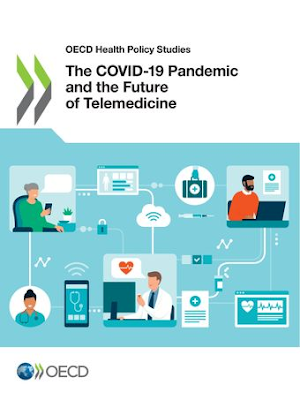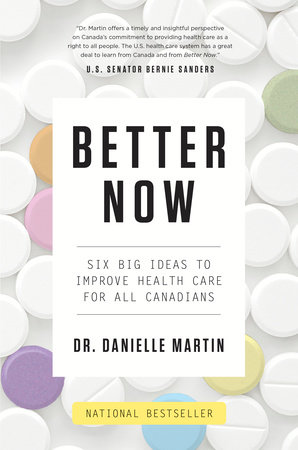Drug Wars: How Big Pharma Raises Prices and Keeps Generics Off the Market
Llibre resumit amb IA.
El llibre "Drug Wars: How Big Pharma Raises Prices and Keeps Generics Off the Market" de Robin Feldman i Evan Frondorf examina detalladament les estratègies que utilitza la indústria farmacèutica per augmentar els preus dels medicaments i evitar que els genèrics entrin al mercat.
El "Pròleg: Grans escàndols, preus més alts" introdueix la "Pharma sota foc" i assenyala que, malgrat els excessos i les preocupacions detallades al llibre, els productes farmacèutics han contribuït immensament a millorar la salut i la qualitat de vida a tot el món. Es destaca que la investigació i el desenvolupament són costosos i que els sistemes de propietat intel·lectual són essencials per incentivar la despesa i la innovació, tot i les controvèrsies sobre els preus. Es menciona Sovaldi com una cura essencialment miraculosa per a l'hepatitis C. També es descriu l'"estranya economia dels productes farmacèutics" i es proporciona un breu resum dels medicaments genèrics.
La "Introducció: El camí sinuós cap a l'entrada de genèrics" assenta les bases per entendre la complexa regulació i els incentius que regeixen l'entrada de medicaments genèrics al mercat. Es menciona la Llei Hatch-Waxman, que ofereix diversos incentius als genèrics per entrar al mercat el més ràpidament possible, creant una complexa xarxa de regulació. També es defineixen termes clau com a ingredient actiu i via d'administració. La introducció explica que la Llei Hatch-Waxman requereix que les empreses de medicaments de marca llistin totes les patents que "podrien ser raonablement reivindicades" contra un sol·licitant de genèrics, les quals es registren en un document de la FDA conegut com a "Llibre Taronja". Es detalla el procés de la certificació de "Paràgraf IV", que al·lega que la patent llistada és invàlida o no seria infringida per la sol·licitud del medicament genèric. Aquesta certificació es considera un acte "artificial" d'infracció de patent, permetent a l'empresa de marca iniciar un litigi en un termini de 45 dies.
El Capítol 1, “Generation 1.0”: The Rise and Fall of Traditional Pay-for-Delay, se centra en la pràctica del "pagament per retard", on les companyies de marca paguen a les companyies de genèrics per retardar l'entrada dels seus productes al mercat. Es descriuen els contorns bàsics del pagament per retard i com aquest actua com un "coll d'ampolla" per a l'entrada. S'aborda si el pagament per retard és realment incorrecte des del punt de vista de les farmacèutiques.
Capítol 2: “Generació 2.0”: Complicant el Pagament per Retard. Aquest capítol explora com les companyies farmacèutiques van evolucionar les seves estratègies per retardar l'entrada de medicaments genèrics després d'una major escrutini dels acords tradicionals de "pagament per retard" ("pay-for-delay"). Aquestes noves tàctiques es denominen "Generació 2.0" i es caracteritzen per acords més complexos que inclouen disposicions no monetàries, amb l'objectiu d'obscurir el valor intercanviat a canvi del retard en l'entrada dels genèrics.
- S'introdueixen exemples d'aquests acords de la Generació 2.0, com ara acords laterals ("side deals") que van més enllà dels pagaments en efectiu directes.
- Es discuteix el cas In re K-Dur, considerat generalment el primer acord de la Generació 2.0 que va enfrontar un important desafiament judicial, i com va portar a una sentència que els pagaments per retard podien abastar més que pagaments directes en efectiu.
- El capítol també analitza el cas In re Lipitor de Pfizer contra Ranbaxy, que il·lustra la complexitat d'analitzar múltiples acords en casos de la Llei Hatch-Waxman i la dificultat de definir l'abast d'un pagament per retard.
- S'introdueix el concepte de "clàusules d'escolta" ("boy scout clauses"), on les companyies de marca prometen un bon comportament, però d'una manera que té efectes anticompetitius.
- Es detalla el cas King Drug de Glaxo contra Teva, on un acord de "no genèric autoritzat" ("no-authorized-generic") es va considerar un possible "transferiment invers inusual i inexplicable de valor considerable" sota la doctrina Actavis.
- Es menciona com, després de la decisió Actavis, els acords amb disposicions no monetàries es van convertir en una manera per a les companyies de marca d'intentar eludir la creixent escrutini antimonopoli sobre els pagaments purs en efectiu per retard.
Capítol 3: “Generació 3.0”: Noves Tàctiques per a l'Obstrucció Activa de Genèrics. Aquest capítol se centra en les estratègies de la "Generació 3.0", on les companyies de marca deixen de banda la col·lusió amb els fabricants de genèrics i passen a obstaculitzar activament l'entrada d'aquests al mercat. Aquestes tàctiques utilitzen processos administratius, esquemes reguladors relacionats amb la Llei Hatch-Waxman i modificacions de medicaments.
- Es descriu l'estratègia del "salt de producte" ("product hopping"), on una companyia de marca retira del mercat la seva versió original d'un medicament i la substitueix per una versió lleugerament modificada just abans que els genèrics de la versió original puguin entrar al mercat (per exemple, el pas d'AstraZeneca de Prilosec a Nexium, el de Warner Chilcott d'Asacol a Delzicol i el d'Actavis de Namenda a Namenda XR). S'explora com aquestes modificacions sovint tenen un benefici clínic mínim o nul.
- Es torna a mencionar l'ús de clàusules d'escolta en el context del salt de producte, on una companyia de marca es compromet a no utilitzar tàctiques antagonistes després d'haver-les desenvolupat inicialment (com en el cas d'Endo i Opana ER).
- El capítol destaca la "multiplicitat de tàctiques", on les companyies combinen diverses estratègies d'obstrucció per maximitzar el retard en l'entrada de genèrics.
Capítol 4: “Generació 3.0”: Obstrucció Contínua de les Vies Reguladores. Aquest capítol continua examinant les tàctiques de la Generació 3.0, centrant-se específicament en la distorsió de les vies d'aprovació reguladores.
- Es detalla l'estratègia del retard basat en REMS (Estratègies d'Avaluació i Mitigació de Riscos), on els programes REMS requerits per la FDA per a medicaments amb riscos greus s'utilitzen presumptament per retardar l'entrada de genèrics, dificultant que aquests obtinguin les mostres necessàries per a les proves (per exemple, els casos d'Actelion i Suboxone).
- El capítol explora el retard mitjançant peticions ciutadanes, on les companyies de marca presenten peticions a la FDA sol·licitant que es retardi o s'impedeixi l'aprovació de les sol·licituds de medicaments genèrics, sovint plantejant preocupacions sobre la seguretat o la bioequivalència (per exemple, la petició de Mutual Pharmaceuticals sobre el suc de taronja i la felodipina, les peticions de Warner Chilcott sobre Doryx i les accions de Reckitt Benckiser amb Suboxone).
- Finalment, es discuteix l'estratègia per prevenir l'"etiqueta prima" ("skinny label") bloquejant les excepcions ("carve-outs"). Les companyies de marca intenten evitar que les etiquetes dels genèrics ometin usos del medicament que encara estan protegits per patents, mitjançant petits canvis en l'etiquetatge i la presentació de peticions ciutadanes (com en els casos de Skelaxin, Crestor i Abilify).
En conjunt, aquests capítols il·lustren la creixent sofisticació de les tàctiques utilitzades per les grans farmacèutiques per mantenir els preus elevats dels medicaments i evitar la competència dels genèrics, utilitzant tant acords complexos com la manipulació de vies reguladores.
El Capítol 5, Empirical Evidence of a Citizen’s Pathway Gone Astray, presenta evidències empíriques de com la via de les peticions ciutadanes s'ha desviat del seu propòsit. Es descriu la metodologia utilitzada per analitzar aquestes peticions. Es presenten els resultats de l'estudi i es discuteix el camí a seguir. Una taula mostra totes les peticions relacionades amb retards per any (2000-2012). Les figures il·lustren els mesos des de la presentació de la petició ciutadana fins a l'aprovació del genèric en diferents períodes.
La "Conclusió: Una crida a la reforma sistemàtica" examina els danys socials causats per aquestes pràctiques i proposa sistemes, simplificació, transparència i doctrines basades en estàndards com a vies per a la reforma.
Diverses tàctiques per retardar l'entrada de genèrics es detallen al llarg del llibre:
- Pagament per retard (Pay-for-Delay): Les empreses de marca arriben a acords amb les empreses de genèrics, pagant-los per retardar la introducció de versions genèriques més barates. Aquests acords poden adoptar diverses formes, inclosos els "acords laterals". El cas Actavis és mencionat en relació amb la il·legalitat potencial d'aquests pagaments enrere. El cas In re K-Dur va trobar que un acord de llicència era un "pagament enrere" per al retard genèric. El cas Teva també va implicar un pagament per resoldre una disputa per retardar el medicament per a la narcolèpsia Provigil.
- Ús estratègic de la Llei Hatch-Waxman: Les complexitats de la llei són explotades per les empreses de marca per allargar la protecció de les patents. La certificació de Paràgraf IV i el període d'exclusivitat de 180 dies per al primer genèric que desafia una patent són àrees on es produeixen moltes "guerres". La possibilitat de "parar" el període d'exclusivitat de 180 dies per part del primer sol·licitant genèric es menciona com un "coll d'ampolla".
- Product Hopping: Les companyies de marca modifiquen lleugerament un medicament (per exemple, una nova formulació o via d'administració) i intenten que els pacients canviïn al nou producte abans que el genèric del producte original pugui entrar al mercat. Exemples inclouen el canvi d'AstraZeneca de Prilosec a Nexium i el canvi d'Endo d'Opana ER a Opana ER CRF. El concepte de "boy scout clauses" es relaciona amb aquestes tàctiques.
- Abús de REMS (Risk Evaluation and Mitigation Strategies): Els programes REMS, dissenyats per garantir un ús segur de medicaments amb riscos elevats, es poden utilitzar per bloquejar o retardar l'entrada de genèrics, per exemple, negant mostres del medicament de marca necessàries per a les proves de bioequivalència. El cas d'Actelion es menciona com un exemple d'una empresa farmacèutica que es va negar a vendre mostres del seu medicament Tracleer a una empresa de genèrics. El cas In re Suboxone il·lustra com les companyies de marca poden utilitzar els REMS i les peticions ciutadanes en un intent de retardar l'entrada de genèrics.
- Peticions Ciutadanes: Les companyies de marca presenten peticions a la FDA, de vegades sense mèrit substancial, per intentar retardar l'aprovació de les sol·licituds de medicaments nous abreujades (ANDA) per a genèrics. L'anàlisi empírica del llibre mostra que aquestes peticions s'utilitzen com un esforç d'últim recurs per retardar l'entrada de genèrics. Exemples inclouen la petició de Mutual Pharmaceuticals relacionada amb el felodipina i el suc de taronja, i les peticions d'Endo relacionades amb Opana ER i de Reckitt Benckiser relacionades amb Suboxone. El cas de Skelaxin (metaxalona de King Pharmaceuticals) il·lustra com l'addició de patents de mètode d'ús i un etiquetatge intel·ligent, juntament amb peticions ciutadanes, poden conduir a anys de retard. La tàctica de prevenir l'"etiqueta magra" (skinny label) mitjançant peticions ciutadanes també es discuteix. Els casos de Crestor (AstraZeneca) i Abilify (Otsuka) mostren intents de bloquejar els genèrics mitjançant qüestions d'etiquetatge pediàtric i la Llei de Medicaments Orfes.
El llibre també assenyala la importància de la transparència i la necessitat de reformes per evitar aquestes pràctiques i garantir que els medicaments genèrics assequibles estiguin disponibles per als consumidors.












